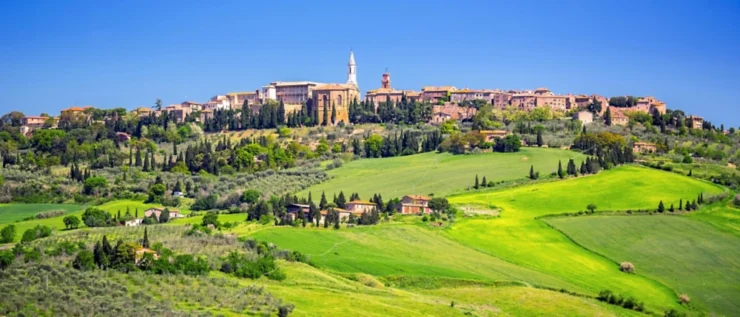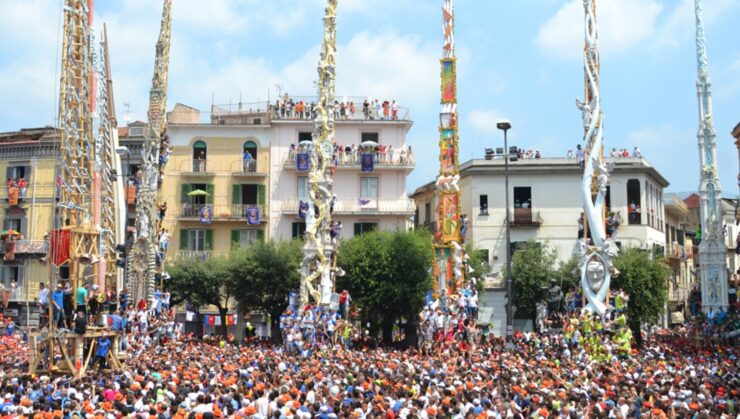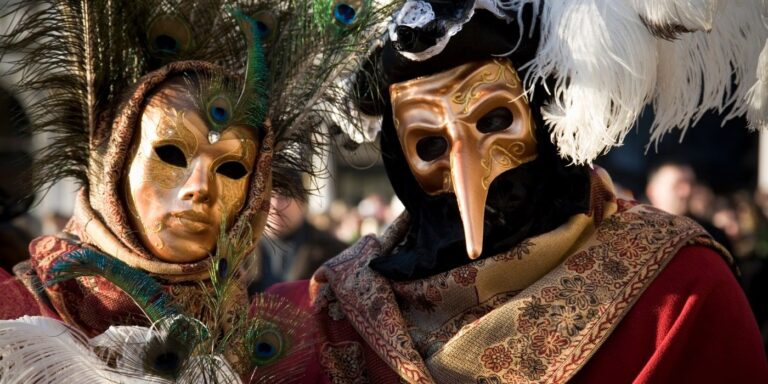Ciao, amici! Welcome to the land of pizza, gelato, and more – Italy. But did you know that there is more to this beautiful country than just its delicious cuisine and romantic atmosphere? From bizarre festivals to unusual customs, Italy has some incredibly quirky traditions that may surprise even the most seasoned travelers. Join us on a journey through Italian oddities as we explore the unique customs and traditions that make Italy truly one-of-a-kind. So grab your cappuccino and let’s dive in!
Regional Differences: Quirks and Customs Varying Across Italian Provinces

Italy’s customs and traditions are as diverse as its landscape, varying distinctly from region to region, as described at www.LearnItalianPod.com. For example, in Friuli-Venezia Giulia, the tradition of ‘Osco’ or ‘the game of marriage’ is quite fascinating. In this centuries-old game, men throw apples at women, and if the woman picks up the apple, it is seen as her accepting his proposal.
In contrast, Sardinia boasts the ritual of ‘Su Merdule e Sa Filonzana’. Here, men dressed as Merdule (a simple peasant) and women as Filonzana (an elderly spinster), symbolize the past agricultural society. The ceremony involves symbolic actions, like threading the wool spindle, representing continuity between past and present.
In the region of Campania, they have the peculiar custom of ‘Cuccagna’. A greased pole with prizes at the top is erected in public spaces during festivals, and young men compete to climb it. Regional quirks like these not only highlight the cultural diversity of Italy but also its vibrant local spirit.
Festivals and Celebrations: Unique Events That Define Italian Culture

Italy is synonymous with culture and tradition, where numerous idiosyncratic festivals add vibrancy and charm. Case in point, the Battle of the Oranges in Ivrea, a town in the northern province of Turin. This three-day event takes place in February, recreating a medieval event with participants divided into nine combat teams, pelting each other with oranges. Why oranges? The legend says it symbolizes the decapitated head of a tyrant lord, thrown by a miller’s daughter, Violetta, to spark an uprising.
Then there’s the Festa dei Gigli (Festival of the Lilies) in Nola, commemorating San Paolino, the city’s patron saint. Each June, the town’s guilds construct spectacular 25-meter-tall towers (or ‘lilies’), each weighing about 2,500 kilograms, and parade them around the city, a tribute to the saint’s return from captivity. The towering structures, the music, and the rhythmic dance of the ‘paranza’ (carriers) make this event truly mesmerizing.
In contrast, the Procession of the Mysteries in Trapani, Sicily, during Good Friday, is a solemn affair. Lifelike wooden sculptures, illustrating scenes from the Passion of Christ, are carried through the city streets over 24 hours. The poignant tableau, coupled with the lilting strains of accompanying bands, create a vividly spiritual experience that’s quintessentially Italian.
Gastronomic Delights: Unusual Italian Dishes and Dining Traditions

When it comes to food, Italians infuse an element of the unexpected. Consider Casu Marzu, a Sardinian delicacy. It’s sheep’s milk cheese intentionally infested with live insect larvae (cheese flies). As the larvae break down the cheese’s fats, it reaches an advanced level of fermentation, giving it a creamy texture. Unusual? Yes. Delightful? That’s up to the brave gourmands who try it.
Another gastronomic oddity is Lampredotto, a popular street food in Florence. It’s a sandwich filled with the fourth and final stomach of a cow, traditionally slow-cooked with tomato, onion, parsley, and celery. Served hot in a crusty bun and seasoned with spicy or green sauce, it has the city’s food lovers queuing up for a bite.
While the dishes may be unusual, the dining traditions are charming. For instance, “La Passeggiata” or the evening stroll, sees Italians amble through streets, socializing and often stopping for an ‘aperitivo’. This light snack, usually enjoyed with a cocktail, is not just about satiating pre-dinner hunger, but a cherished ritual of camaraderie.
Gestures and Body Language: Expressive Non-Verbal Communication in Italy

Italians are known for their expressive non-verbal communication. Hand gestures are an integral part of their vocabulary, conveying everything from praise and insult to surprise and anger. For instance, ‘Del Dito’, a gesture involving flipping the chin with the fingers’ top, indicates indifference or disagreement. While it may seem casual to a non-Italian, it’s quite a dismissive signal in local parlance.
The ‘Ombrello’ gesture, where one makes a fist and places the other hand over the elbow while raising the forearm, is considered rude, symbolizing a phallic image. However, ‘Ma Che Vuoi’, where one opens the arms with palms up and eyebrows raised, is a simple, often humorous gesture meaning ‘what do you want?’
Moreover, Italians communicate with their whole bodies. A conversation involves animated facial expressions, leaning in, or even touching. It’s not unusual to see Italians in heated debates, arms flying and voices loud, only to realize they are merely discussing dinner plans. It’s a communication style that’s uniquely Italian – vivid, passionate, and full of life.
Historical Oddities: Unusual Stories and Legends from Italy’s Past

Italy’s past is rife with peculiar tales and legends that make its history even more fascinating. The Castellana Caves in Puglia, for instance, are steeped in mystery. They were rediscovered accidentally in 1938, and legend has it that they are home to a ghost named Venera, a young woman who took refuge there to escape an arranged marriage.
Another intriguing tale is that of the Mouth of Truth (‘Bocca della Verità’) in Rome. This large marble mask, which dates back to ancient Roman times, is said to bite off the hands of those who lie. While it’s merely a tourist attraction today, it’s a testament to Italy’s historical richness and love for folklore.
Lastly, the tale of Juliet’s balcony in Verona is made famous by Shakespeare’s “Romeo and Juliet.” Despite the play being fictional, thousands flock to this city to leave notes on the wall beneath the balcony, hoping for luck in love. Whether these stories are fact or fable, they bring an added depth to Italy’s storied past.
Fashion and Style: Italy’s Unique Fashion Sense and Iconic Trends

Fashion is not just a business in Italy; it’s a lifestyle. The country is renowned for its flamboyant, yet effortlessly elegant style. One such trend is ‘sprezzatura’, an art of appearing stylish without seeming like you’ve tried too hard, an embodiment of Italian nonchalance. Another distinctive trend is the Italian men’s ‘spezzato’, a technique of mixing and matching suit separates to create a seemingly unplanned yet chic look.
Italian women, on the other hand, have a penchant for ‘passeggiata style’. It involves dressing up for the evening stroll, donning elegant dresses and sophisticated accessories. It’s a social ritual that’s as much about showcasing personal style as it is about socializing.
Moreover, Italy’s regional fashion differences are fascinating. While Milan is the epicenter of high-fashion minimalism, Rome is known for its opulent, luxe aesthetic. Naples, in contrast, celebrates colorful and bold styles. The diverse sartorial expressions make Italy a veritable playground for fashion enthusiasts.
Conclusion
In conclusion, Italy’s peculiar traditions, idiosyncratic customs, and unusual quirks make it a fascinating country to explore. The essence of Italian oddities lies in their unique blend of history, culture, and tradition. The result is a vibrant tapestry that continues to captivate, amuse, and inspire – just like Italy itself.

